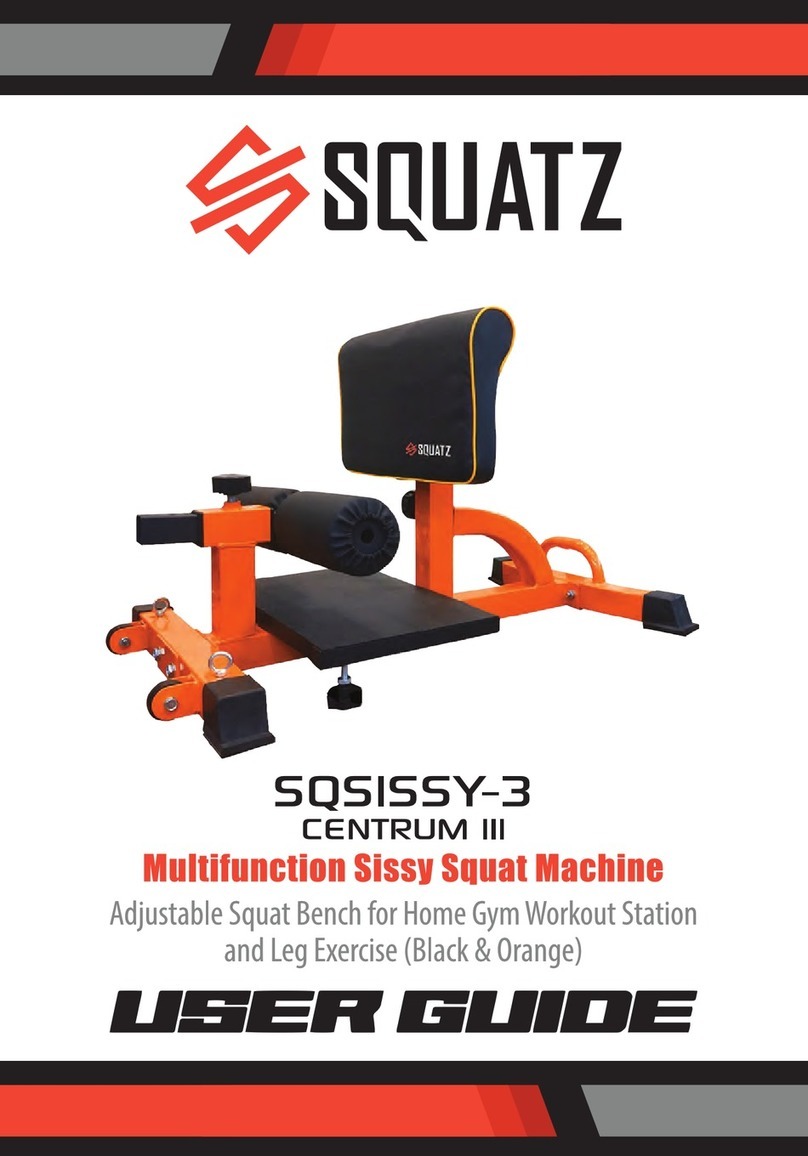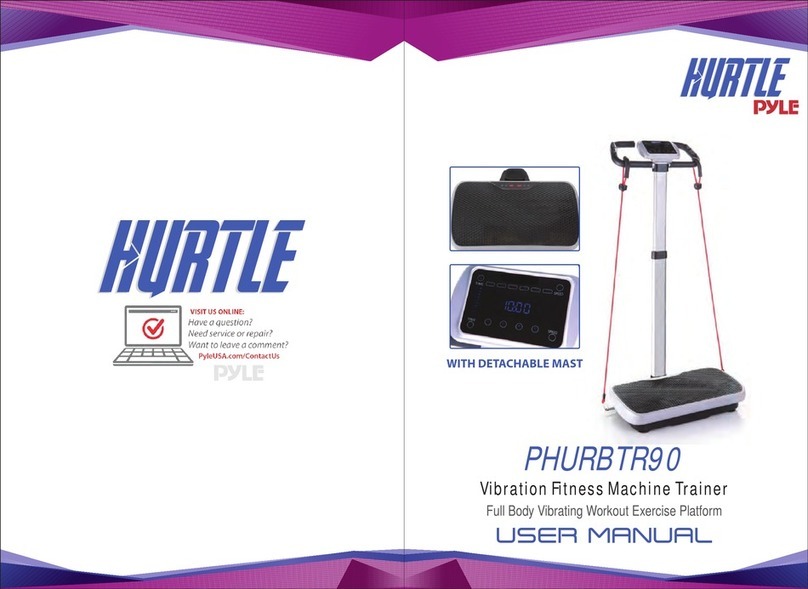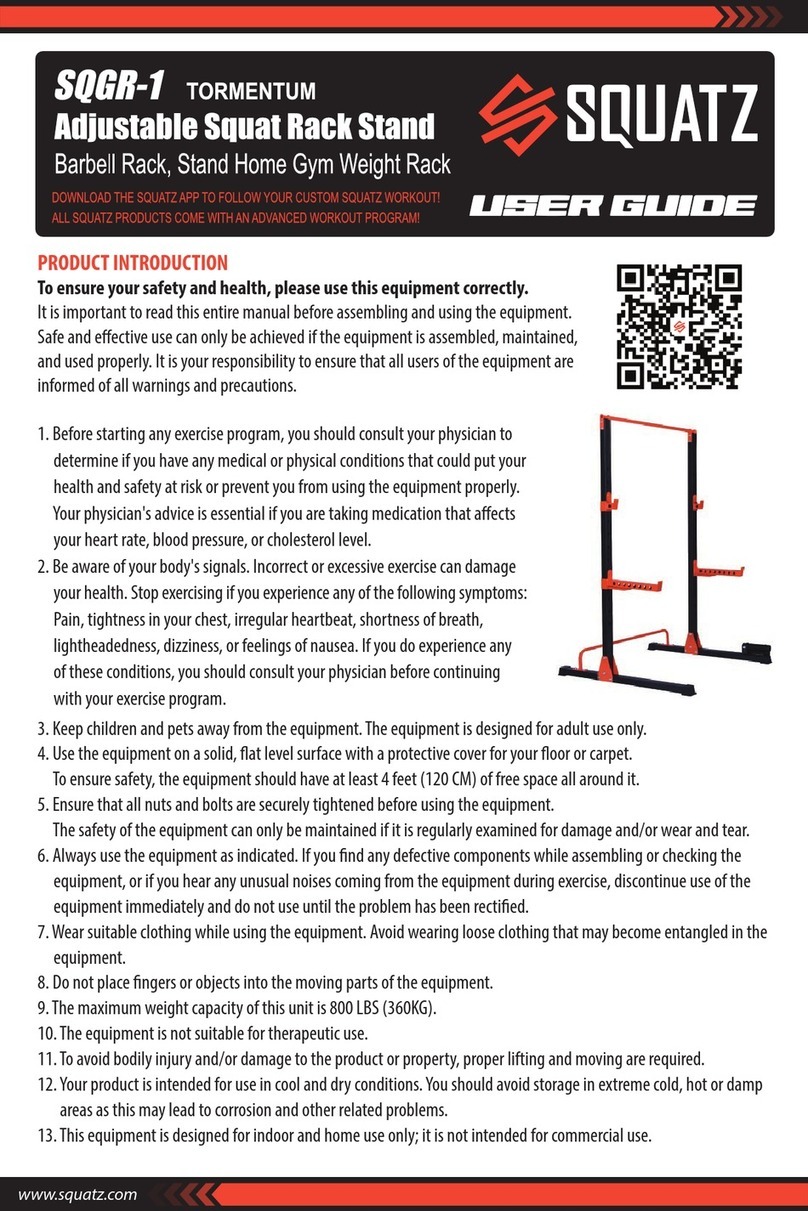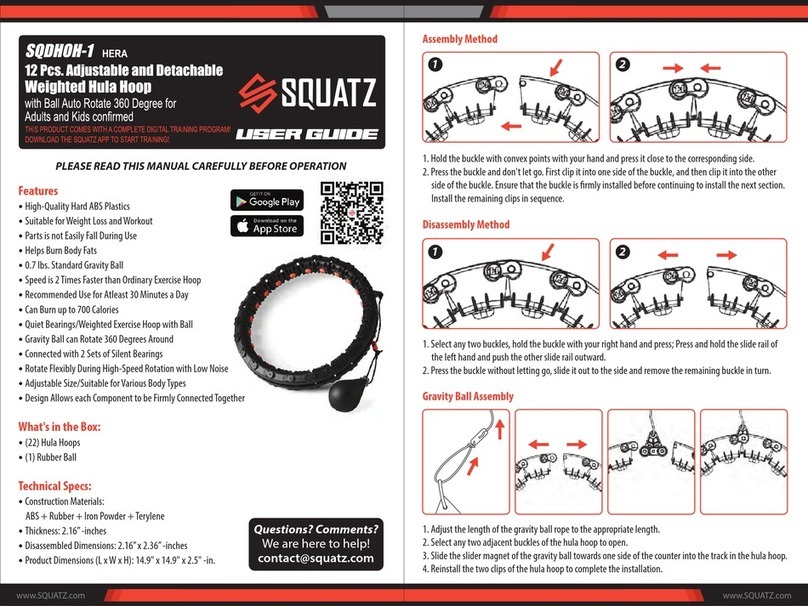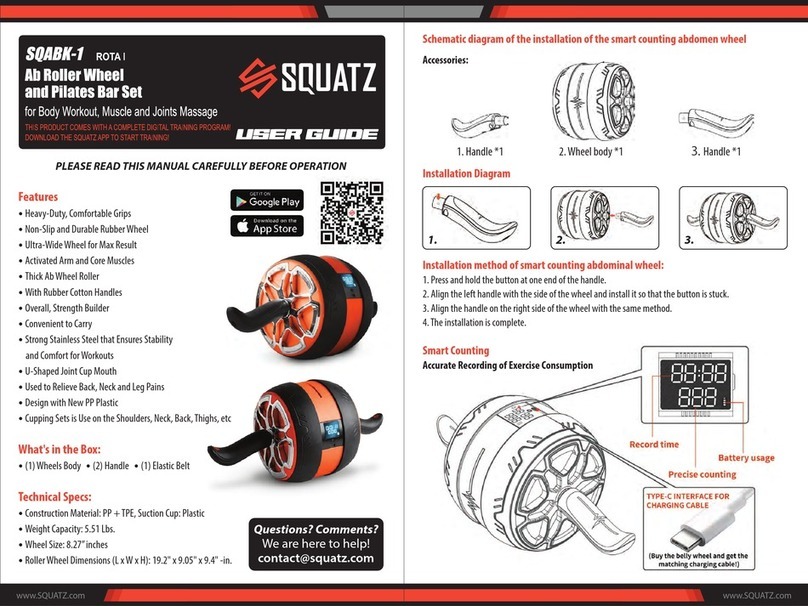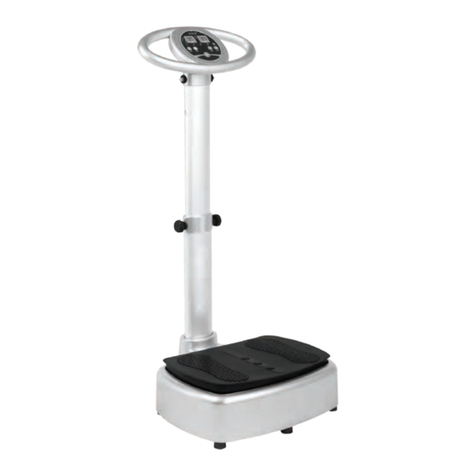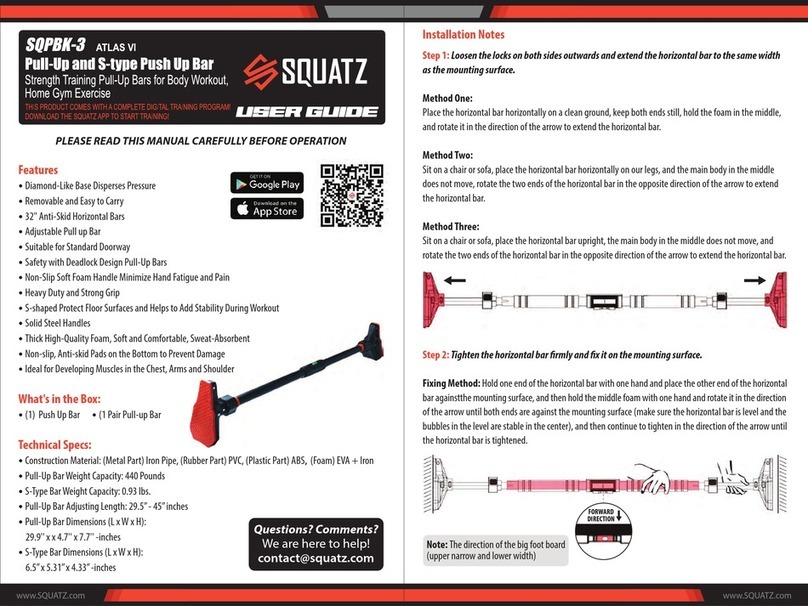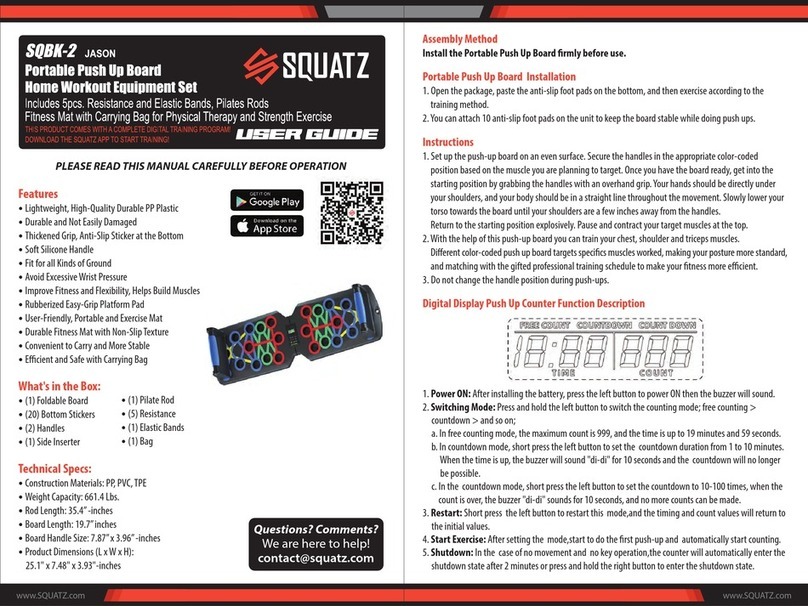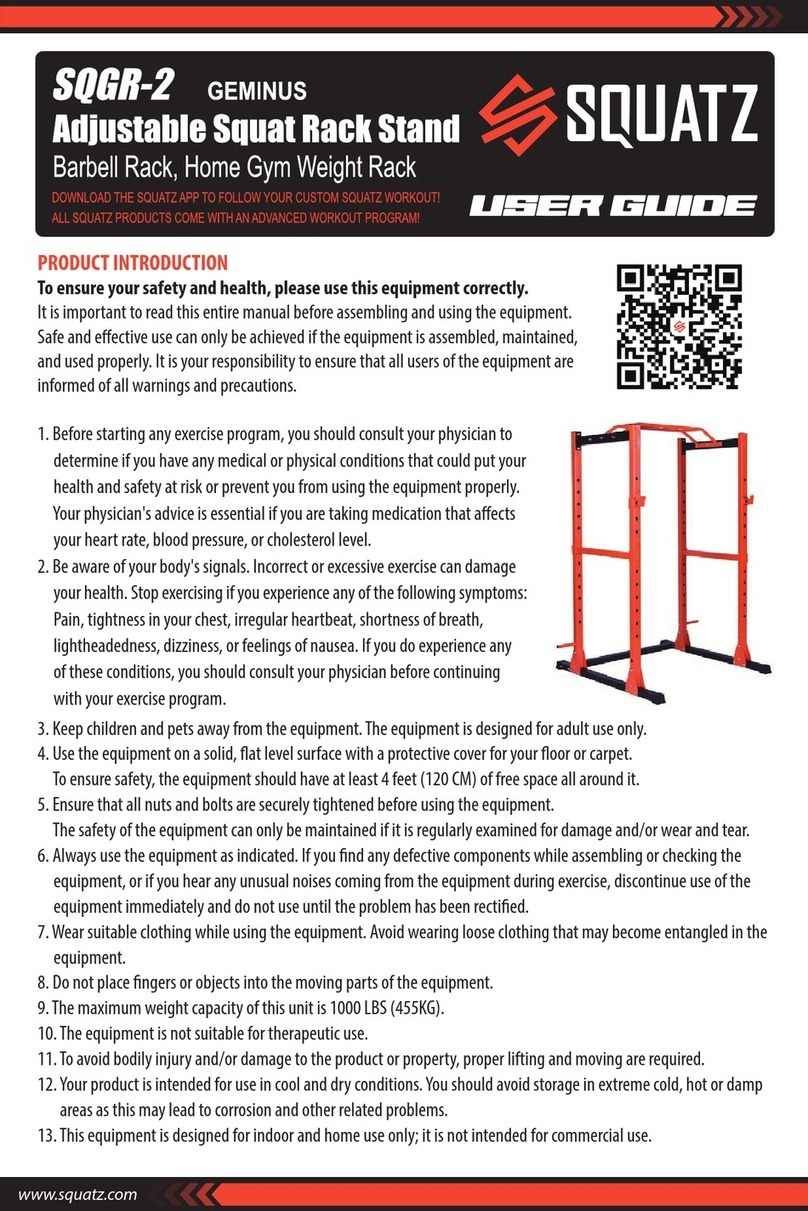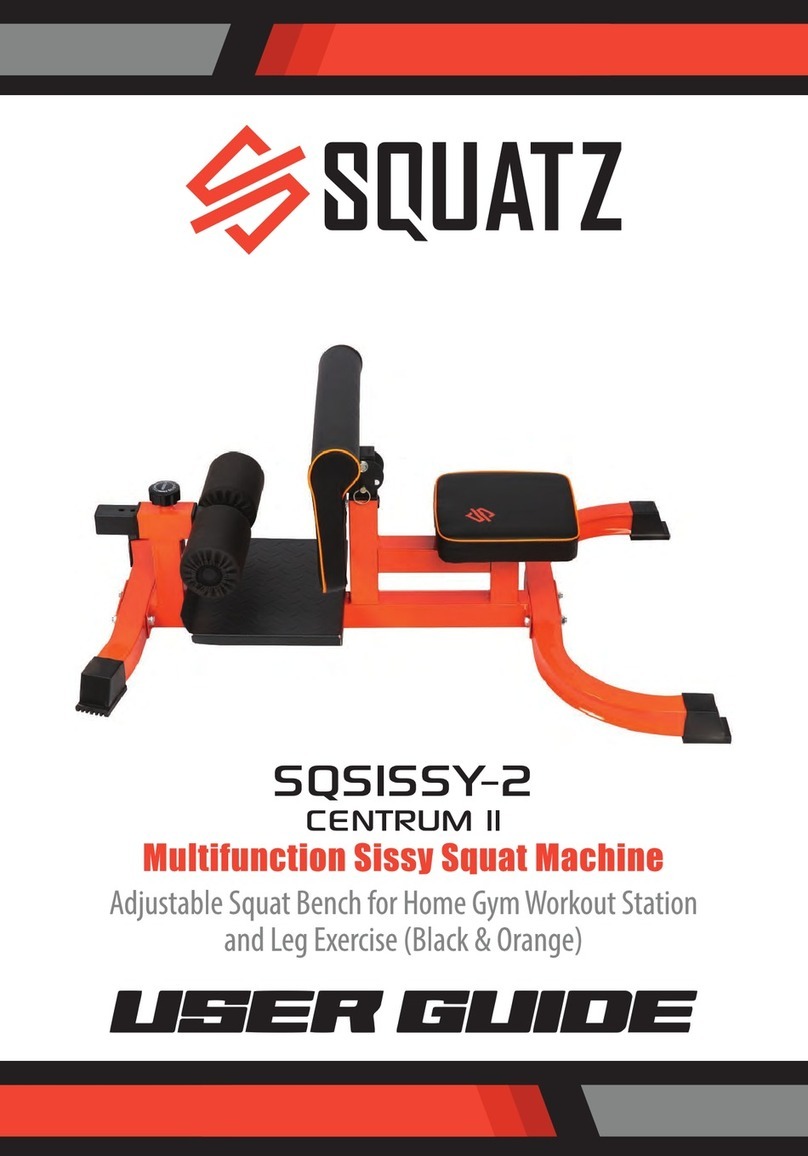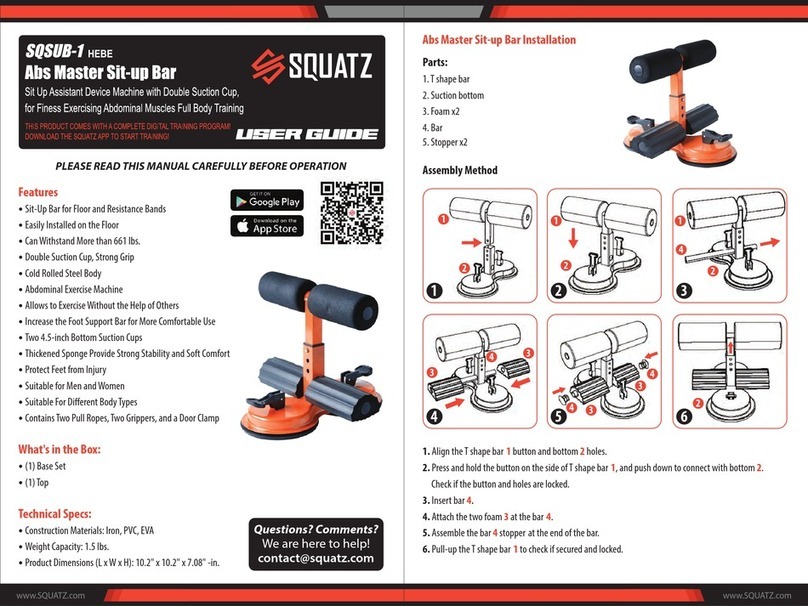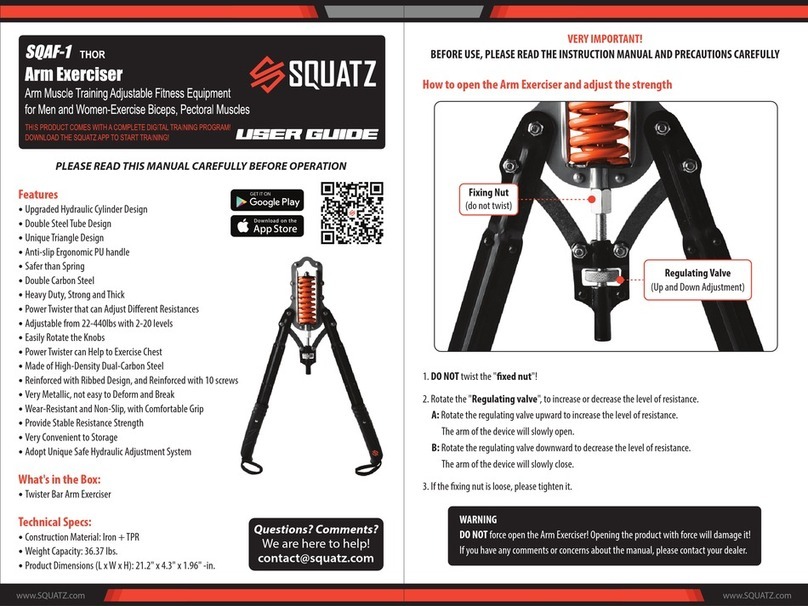
www.SQUATZ.com
PLEASE READ THIS MANUAL CAREFULLY BEFORE OPERATION
Features
•Lightweight and Easy to Use
•Non-Flexing ABS Frame
•Durable and Sturdy
•Thick Foam Padding
•Non-Slip Texture Grip
•Sweat Resistant Padding
•Provide Back Support
•Alleviating Upper or Lower Back Pain
•Release the Tension on Back and Shoulders
•Help Improve and Flexibility
•Quality Thick Padded Yoga Exercise Wheel
•Comfortable Cushioned Exterior
•Provides Powerful Weight Support Up to 777 LBS
•FullWeight Without Fear of Slips, Injuries, and Accidents
•Constructed with High-End Durable Plastic
What's in the Box:
•Yoga Wheel Back Stretcher
Technical Specs:
•Construction Materials: PP+TRR
•Thickness: 1.57 inch
•Weight Capacity: 2.43 lbs.
•Product Dimensions (L x W x H): 12.5" x 12.5" x 4.7" -in.
www.SQUATZ.com
Yoga Wheel Training Method
1. Massage the Spine: The Yoga wheel can be adjusted according to the contour of your spine.
You can stretch and extend your spine by moving theYoga wheel up and down.When you do back bending,
nd a static center point on the Yoga wheel to support your upper body. This stretching action is especially
suitable for sedentary workers. Starting from a sitting position, place theYoga wheel under the pillar,
keep your feet slightly separated, and start gently moving your spine upward to theYoga wheel.
Here, you can slowly try to move back and forth and feel the comprehensive massage of the spine.
2. Extension and Stretch: Starting from a sitting position, place the Yoga wheel under the spine, keep
your feet slightly separated, move the yoga to the upper part of the spine, extend your hands forward
and grasp the Yoga wheel behind your head. It's a great way to stretch and open your shoulders and
release your tight head, neck and upper spine. Do a low sprint with a yoga wheel. Put theYoga wheel on
the inner thigh for support, or support the extension of the quadriceps femoris.The buttery pose of
leaning back is a way to gently open the hip, and it is better to use the Yoga wheel to bend back to open
the chest. Sit on the mat and touch the soles of your feet with each other. Put the Yoga wheel at the
waist and lie gently on theYoga wheel. Relax your arms on your side with your palms up.
The heroic pose of leaning back is a deeper way to open the upper body, bend back and extend to the
quadriceps, knees and ankles. The hip part is separated from the knee and is the same width as the hip
(close to each other can deepen the posture). Lower the torso, fully contact the Yoga wheel with the
spine, and extend the arms over the head.
3. Strengthen and Tighten: Putting your lower legs on theYoga wheel to practice plank pose can
exercise your core and upper body at the same time. Do plank pose, bend your legs, put your legs on the
Yoga wheel, slowly move the Yoga wheel forward, and then move theYoga wheel backward to a
complete plank pose. Repeat to strengthen and tighten the abdomen, arms and chest. Gluteus maximus
and lower body can also have targetedYoga rounds. Starting from standing, face the Yoga wheel to the
inside of the right ankle, and extend and extend the left foot on the Yoga wheel. When the Yoga wheel is
away from the ankle, bend the knees and start the hips. This will strengthen the gluteus maximus,
quadriceps femoris, calf and ankle muscles.
4. Establish Balance: Garland asana is a posture to strengthen stretching. Practicing in yoga wheel can
establish strength and balance at the same time. Toe standing is another interesting attempt of Yoga
wheel. This pose needs balance and stability. In addition, the use of Yoga wheel needs to coordinate the
part of body consciousness, start and strengthen the trunk.
Questions? Comments?
We are here to help!
